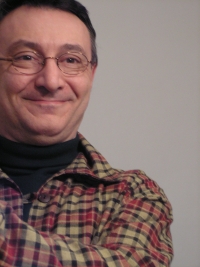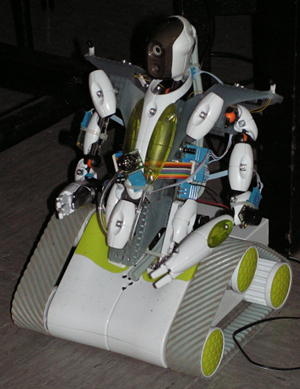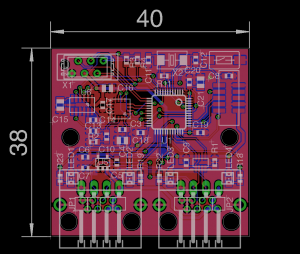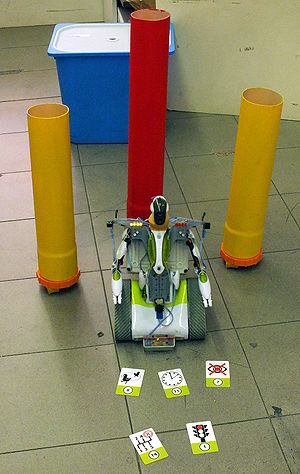Andrea Bonarini
|
|
|
| E-Mail:
|
bonarini@elet.polimi.it
|
warning.png"Soft Computing" is not in the list of possible values (Affective Computing, Agents - Multiagent Systems - Agencies, BioSignal Analysis, Computational Intelligence and Games, Computer Vision and Image Analysis, E-Science, Machine Learning, Philosophy of Artificial Intelligence, Robotics, Social Software and Semantic Web) for this property.
| Research Areas:
|
|
Full professor, responsible for security of the AIRLab
This is my home page on the airwiki website. Here you can find projects and thesis proposals. For any other information you can try:
___________________________________________________________
List of project proposals
Affective Computing
Robotics
Wiki Page: Autistic Children Play Robot
Title: Autistic Children Play Robot
Description: Within a Polisocial project we will have to implement a robot suitable to play autonomously with autistic children that will interact with it and a game system by gestures.
The thesis will explore some of the aspects of the problem, eventually participating to the production of prototypes to be tested with real users.
The thesis gives the possibility to develop a robot with special requirements, and to work with gesture interpretation by using devices such as Kinect or the WII Mote. The work is done in an interdisciplinary group including care givers and designers.
Tutor: AndreaBonarini
Additional Info: CFU 20 - 20 / Master of Science / Thesis
|
Wiki Page: Barking Robots
Title: Barking Robots
Description: Aim of this project is the development of a robot that can operate autonomously at exhibitions and malls to attract people to a given location, by showing interesting behaviors and interacting with people.
The robot first exhibition has been at Robotica 2009, within HI-Tech Expo at Fiera di Milano, on November 23-25, 2009. Here, the robot had to go around in an area delimited by a white stripe and contact verbally and with gestures people entering the area, in order to attract them to the booth.
Behaviors and gestures have still to be developed to come to an interesting and robust demo at next Robotica, or at other ehibits (e.g. at the Museo della Scienza of Milan).
Tutor: AndreaBonarini
Additional Info: CFU 5 - 20 / Bachelor of Science, Master of Science / Thesis
|
Wiki Page: CAN Bus bootloader for STM32 microcontrollers
Title: CAN Bus bootloader for STM32 microcontrollers
Description: JOINT PROJECT with the Embedded Systems group (contact: Patrick Bellasi http://home.dei.polimi.it/bellasi/)
In order to speed up the development and the maintenance of embedded applications, a way to update the firmware on a microcontroller without the need of connecting cables or programmers can be very handy. We are developing a framework for rapid prototyping of low-cost robots, with smart devices that exchange data on a CAN bus network. The CAN bus bootloader is one of the components we need for this project, enabling remote firmware upgrades of all the devices connected to the CAN network.
This project aims to develop a CAN bus bootloader for STM32 ARM Cortex-M3 microcontrollers, and eventually for other architectures.
Tutor: AndreaBonarini, MartinoMigliavacca
Additional Info: CFU 2 - 5 / Bachelor of Science, Master of Science / Course
|
Wiki Page: Cognitive SLAM 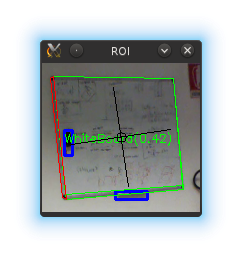
Title: Cognitive SLAM
Description: We have developed a system that is able to detect, recognize and track objects in an image taken from a low cost robot equipped with a IMU and a low cost camera. The system is capable to detect and recognize objects using a user defined fuzzy tree classifier. However the system performance is heavily dependent on high level feature extraction, such as geometric features. The problem is non trivial due to noisy low cost camera and changes in the light conditions. The aim of this project is to improve the feature extraction and description process, both in performance and quality, possible adding a more complete description or others type of features. The long term aim of the research is to have an autonomuos robot capable to create a semantic map of the envirorment, localize himself , make inference on the map, navigate into the envirorment using the objects as landmarks.
No special skills are required, except basic c and object oriented programming.
Tutor: AndreaBonarini, DavideTateo
Additional Info: CFU 5 - 20 / Master of Science / Course, Thesis
|
Wiki Page: Designing Living Objects
Title: Designing Living Objects
Description: The aim of this activity is to investigate how one or more objects in an antropic environment (home, office, hospital) can be designed and implemented to have a character and to move, having nice interactions with people. The work to be done concerns the analysis, definition, design and implementation of at least one of these objects.
Tutor: AndreaBonarini
Additional Info: CFU 5 - 20 / Bachelor of Science, Master of Science / Thesis, Course
|
Wiki Page: Embedded registers view plug-in for Eclipse
Title: Embedded registers view plug-in for Eclipse
Description: JOINT PROJECT with the Embedded Systems group (contact: Patrick Bellasi http://home.dei.polimi.it/bellasi/)
When developing embedded applications it is frequently needed to look at *hardware register content* in order to *debug the code*. All commercial development suites offer register views that show their contents as well as the meaning of each bit. Open source development solutions currently lack this feature, meaning that you have to look to the correct memory location and map the content to the corresponding register bits manually. This seems to be one of the most limiting issues when developing embedded application using open source solutions.
This project aims to fill this gap, developing an Eclipse plug-in that shows the register contents in a tree viewer, like most commercial suites do.
Tutor: AndreaBonarini, MartinoMigliavacca
Additional Info: CFU 2 - 5 / Bachelor of Science, Master of Science / Course
|
Wiki Page: LCM middleware on embedded platform
Title: LCM middleware on embedded platform
Description: We are developing a framework for rapid prototyping of low-cost robotic systems. To fasten robot design and building, and to make software and hardware reuse easier, a modular architecture is mandatory.
In a context of smart modules that have to cooperate by exchanging data to reach their common goal, the communication protocol and middleware are core components.
This project is about the middleware component, a publish/subscribe system that takes care of managing topics, publisher and subscribers, and of marshaling data before sending it.
This project aims at porting the LCM marshaling and middleware library, developed at MIT and used in the Grand Challenge competition, to embedded systems, in order to exploit the existing LCM tools and to be compliant with an existing and efficient technology.
The project consists in:
- stripping non necessary features of LCM to match the constraints of an embedded system and of the communication protocol
- adding necessary features, like the concept of deadline (and priority as a consequence), that are mandatory for a real time distributed system
- building a gateway, on an embedded platform, that acts as gateway between the standard-LCM world and the embededd-LCM network
The projects has to be developed in ANSI C, and experience with embedded platforms is a plus.
Tutor: AndreaBonarini, MartinoMigliavacca
Additional Info: CFU 20 - 20 / Master of Science / Thesis
|
Wiki Page: R2P IMU firmware development
Title: Embedded Inertial Measurement Unit for Unmanned Aerial Vehihcles
Description: We have developed the electronics of an Inertial Measurement Unit based on an ARM microcontroller to be integrated on an autonomous embedded aerial platform. The IMU has already some attitude heading reference system (AHRS) code implemented, but we are interested in:
- implementing embedded algorithms for the estimation of the IMU attitude to be compared with the actual one (e.g., Kalman filter, DCM, Madgwick, etc.)
- developing a, easy to use, procedure for the calibration of IMU parameters
- making a comparison with commercial units using a robot arm as testbed
- validate the accuracy of the IMU on a flying platform
- integrate the measurements from a GPS to reduce drift and provide accurate positiong (this will make it definitely a MS thesis)
Material
- electronic board and eclipse based C development toolkit for ARM processors
- papers describing the algorithms we are interested in implementing
Expected outcome:
- few different AHRS algorithms with comparative results
- user-friendly procedure to calibrate the IMU
- a sistem which integrated IMU and GPS to provide accurate positioning
Required skills or skills to be acquired:
- C programming on ARM microcontroller
- background on kalman filtering and attitude estimation
Tutor: AndreaBonarini, MartinoMigliavacca, MatteoMatteucci
Additional Info: CFU 2 - 20 / Bachelor of Science, Master of Science / Course, Thesis
|
Wiki Page: Robot Games
Title: Robot Games
Description: Projects may include the design of an interactive game on an existing or a new robot, and its evaluation. These projects allow to experiment with real mobile robots and interaction devices. Some games may be designed for disabled children. The project can be considered a MS thesis if it can produce a new game and, possibly, a new robot, and includes adapting the behavior of the robot to the player.
Tutor: AndreaBonarini
Additional Info: CFU 2 - 20 / Bachelor of Science, Master of Science / Course, Thesis
|
Wiki Page: Scripting language on embedded platforms
Title: Scripting language on embedded platforms
Description: JOINT PROJECT with the Embedded Systems group (contact: Patrick Bellasi http://home.dei.polimi.it/bellasi/)
When developing embedded applications it is common the need to test some algorithm in some fast way, without to re-program the whole firmware every time. PAWN (http://www.compuphase.com/pawn/) is a *simple and lightweight scripting language with a C-like syntax*. Execution speed, stability, simplicity and a small footprint were essential design criteria for both the language and the abstract machine, making PAWN suitable for embedded applications.
This project aims to port the abstract machine to ARM Cortex-M3 microcontrollers, add a set of functions to interface with the underlying hardware peripherals and then to embed it as ChibiOS/RT (http://www.chibios.org) thread.
Tutor: AndreaBonarini, MartinoMigliavacca
Additional Info: CFU 2 - 5 / Bachelor of Science, Master of Science / Course
|
Wiki Page: Stability and motion control of a balancing robot
Title: Stability and motion control of a balancing robot
Description: This project is focused on the control of both stability and motion of TiltOne, a balancing robot.
TiltOne is a robot with only two wheels that can stand in vertical position following an unstable equilibrium point. The control is applied by commanding an amount of torque to the wheels, allowing the robot to mantain it's gravity center vertical aligned to the wheel axis.
The aim of the project proposal is to implement and compare different control solutions, based on classical approach (as PID and LQR control) and Machine Learning approach (as Reinforcement Learning control policies), that allow the robot to move following a given trajectory at a given speed.
Tutor: AndreaBonarini, MartinoMigliavacca
Additional Info: CFU 5 - 20 / Master of Science / Course, Thesis
|
PhD Students I am currently tutoring
Projects I am currently tutoring
Students I am currently tutoring
